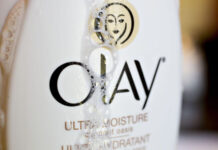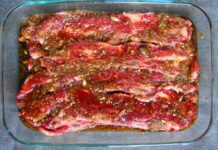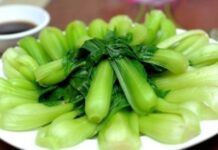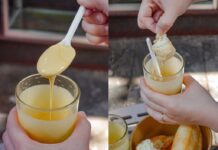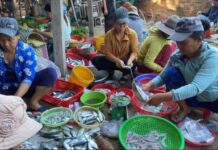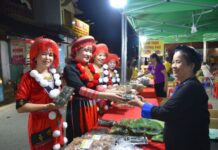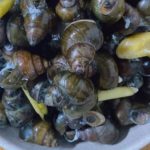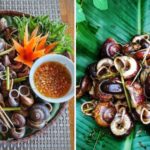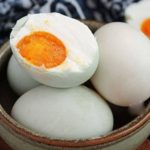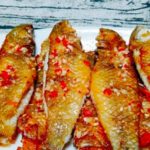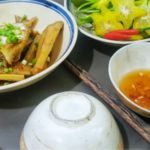“Nine-spur chicken” is a dish thought to only exist in the legend of Son Tinh – Thuy Tinh that is passed down in folklore. But this type of “nine-spur chicken” that is thought to only exist in this legend is real and has become a popular breed of chicken that many people buy for the Lunar New Year.
Considered a precious specialty of Tan Son land (Phu Tho), nine-spur chicken, or also known as multi-spur chicken, is favored by many people and sought after every Lunar New Year.
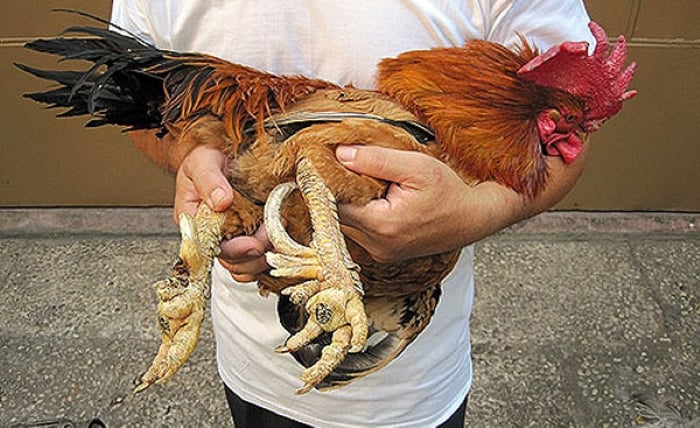
The reason why people seek chickens with all nine spurs during the Lunar New Year is because this breed of chicken is associated with the ancient legend, carrying spiritual significance and reminding people of their ancestral roots. Additionally, people in the past often believed that when it came to ceremonial offerings, the number nine was the most beautiful odd number, symbolizing eternity, luck, and wealth.
Furthermore, this special breed of chicken has its origins in the forest and is suitable for free-range farming, which makes them very agile. They mainly eat corn and rice, and especially, this breed of chicken also has the ability to forage for its own food. Therefore, the quality of the meat is also distinctive, with its aroma, tenderness, and sweetness being completely different from regular chicken breeds.
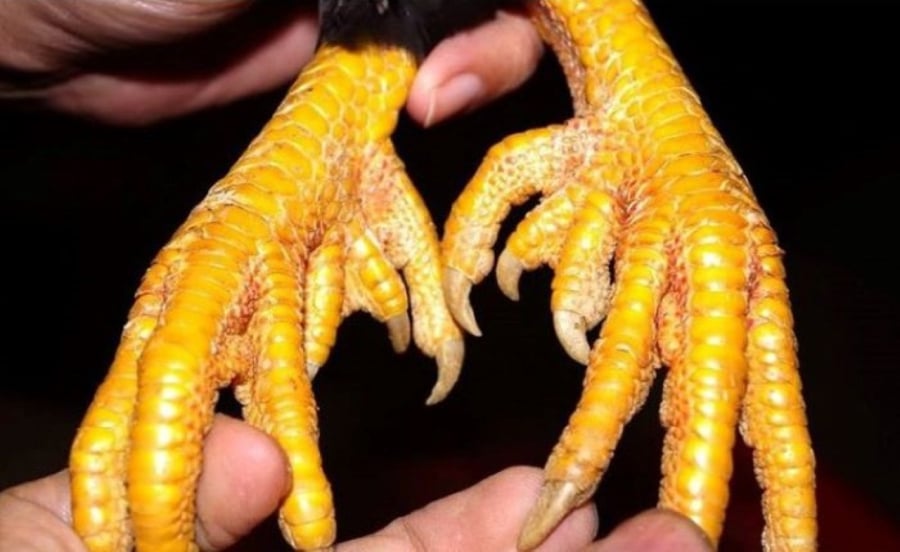
However, in recent years, chickens with eight or nine spurs are still extremely rare. This is also the reason why, despite the high price reaching millions of dong, not everyone can afford to buy them.
Anh Vu fish – an offering to the deities
Since ancient times, there has been a type of fish that only appeared in a few river regions. With its peculiar shape, this fish was only used as an offering to the king, and ordinary people couldn’t eat it. This fish is known as Anh Vu fish.
It seemed that one had to greet this rare fish, but luckily there was a family that managed to preserve and tame this fish on the top of Ai Au Mountain. Ai Au Mountain is always lush with greenery all year round, and the stream water is clean. However, breeding this type of fish is extremely difficult because they are very selective about their habitat. Anh Vu fish is an enduring brand of the Ba Song Bach Hac (Viet Tri, Phu Tho).
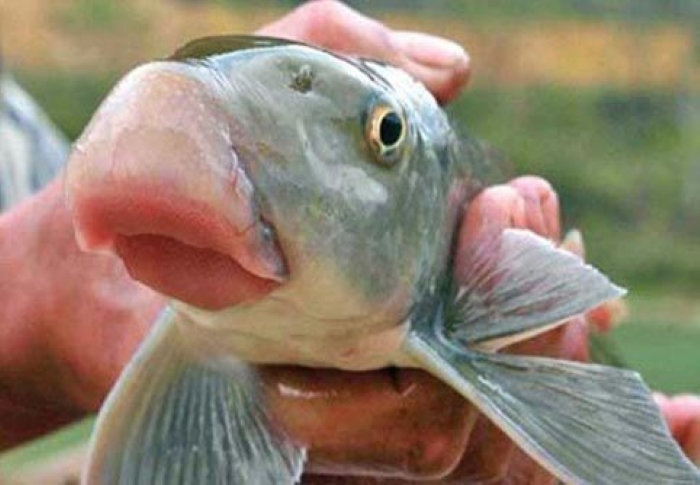
With its white meat fillets and unique crunchy cartilage, Anh Vu fish is considered by culinary connoisseurs to be more delicious than any other freshwater fish. Therefore, from ancient times, Anh Vu fish has been used as food offerings to the king, as recorded in the ancient chronicles.
It is said that Anh Vu fish appeared in our country 2000 years BC. Around the 14th century, in the reign of the third Hung Vuong king, a fisherman caught the Anh Vu fish in the area of the Lo River and offered it to the king. It looked strange but tasted delicious, so the king recognized it as a rare and precious fish. Since then, anyone who caught this fish had to offer it up.
In the United Vietnam Annals, it is recorded that “Anh Vu fish, also known as Gia Ngu, lives at the junction of the Bach Hac rivers. It only appears in the new winter season. The taste of the fish is delightful and nourishing. Downstream from the Bach Hac River, it no longer exists.” Moreover, in the Miscellaneous Notes, Nguyen Trai also wrote: “The Anh Vu fish is used as an offering to the deities…”
Anh Vu fish is difficult to catch and hard to find. It lives specifically in underground caves. In 1992, the Ministry of Science, Technology, and Environment recorded Anh Vu fish in the Red Book of Vietnam’s animal species as an endangered species in need of protection.
Anh Vu fish is not an ordinary fish that can be bought for just 1 or 2 million dong. It can cost up to tens of millions of dong. Anh Vu fish is difficult to catch because they only live deep under the cave in the riverbed. Divers have to use specialized tools to catch them.
Dong Tao Chicken, expensive but now accessible to everyone
When it comes to delicious and unique dishes of Hung Yen province, we cannot overlook the specialty Dong Tao Chicken – a rare and valuable breed of chicken in Vietnam, known for its extremely large legs.
Dong Tao Chicken has long been regarded as a purebred, rare breed of chicken in Vietnam, often used to serve the kings in the ancient times. Nowadays, they are a delicacy reserved only for the wealthy, and there are even beauty contests exclusively for Dong Tao chickens.
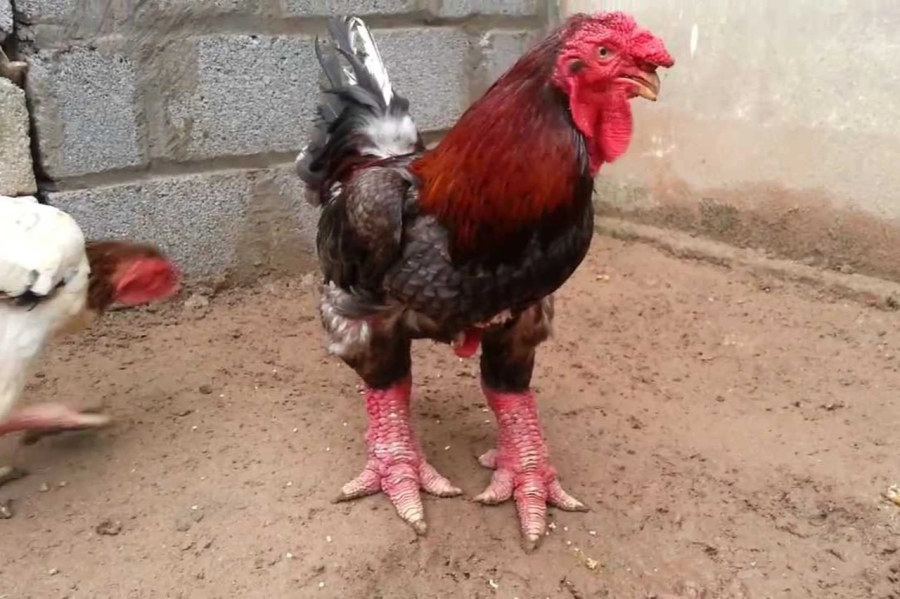
Most of the Dong Tao chickens are still raised in Dong Tao Village, although the exact origin of the chicken breed has not been determined, they have existed for hundreds of years.
However, Dong Tao chickens are also favored for their distinctive and delicious taste, which some describe as “tasting like beef,” which no other chicken breed can achieve.
Perhaps it is because of these factors, combined with their rarity during breeding, that the price of Dong Tao chickens continues to rise. About 2-3 years ago, the value of a mature Dong Tao chicken ranged from 1.5-3 million dong.
Royal bananas, the best tasting bananas in the country chosen to serve kings
Royal bananas in Vietnam originally originated from Dai Hoang Village, Ly Nhan Ward in ancient times, now Hoa Hao Commune, Ly Nhan District, Ha Nam Province, known to many people as the hometown of writer Nam Cao.
This is the top-ranked delicious banana among more than 30 banana varieties in Vietnam. It is called a royal banana because it was used to serve the kings as a dessert after a royal meal. The royal banana tree has a shape similar to a dwarf banana but smaller and more delicate.
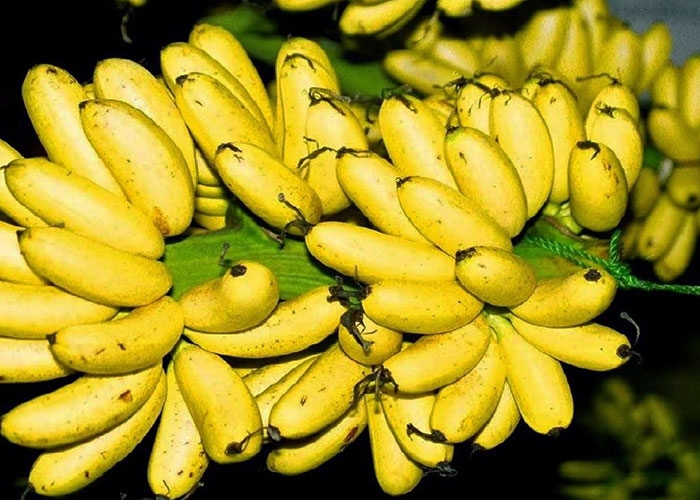
According to folklore, during the Tran dynasty, from the Thiên Trường Palace to outside Nam Dinh city, many areas were the homeland and residence of the Tran dynasty. Grateful for the talent and virtue of the rulers, the people of Nam Dinh cultivated a valuable product to offer to the kings, which was the royal banana.
Still being cultivated today, royal bananas bear very small fruit that is ripened with a bright yellow color like silk, with a fragrant aroma and a sweet and refined taste that is alluring…
Royal bananas have a small and attractive appearance, thin skin, and when ripe, they turn a deep yellow color. The flesh is sweet and rich, and the bananas do not become mushy when ripe. Not only are they delicious, tender, sweet, and fragrant, but they also retain their flavor for a long time.
Cam Tien Vua – “the first-class orange”
Cam Xa Doai (Doai Village Orange) in Nghe An used to be used as an offering to the kings and is now only sold on the occasion of the Lunar New Year. Each Cam Xa Doai orange costs around 70,000 dong. Also, many Cam Xa Doai trees have been ordered with prices ranging from 25 to 40 million dong per tree.
Not only known in Nghe An, Cam Xa Doai is also considered the “first-class orange”. With its high price, each orange costs around 70,000 dong, and Cam Xa Doai is always in high demand.
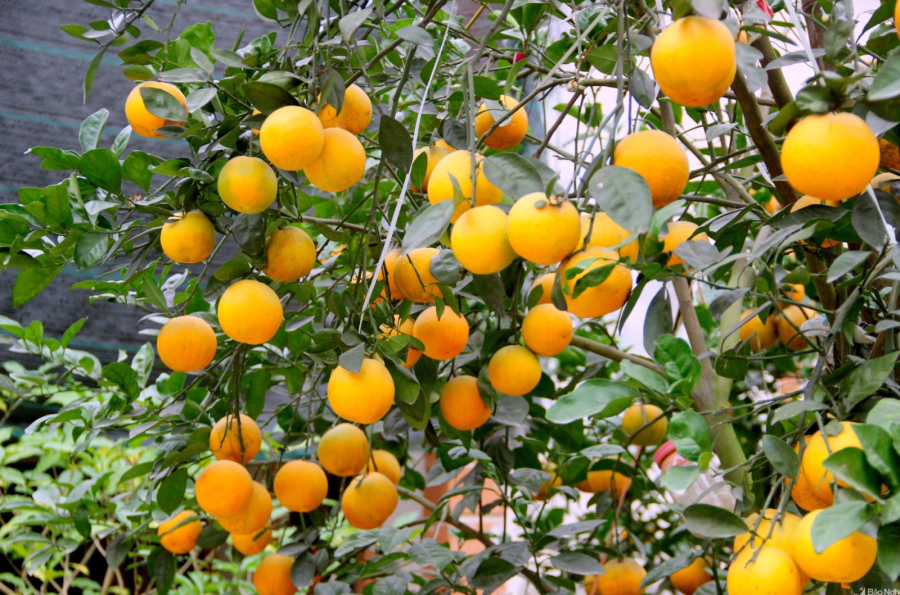
For a long time, Cam Xa Doai in Nghi Dien commune, Nghi Loc district, Nghe An province has become a famous specialty of the Nghe region and is considered the “first-class orange” by visitors from many places.
According to the locals in Nghi Dien commune, Nghi Loc district, Nghe An province, this is the only place where Cam Xa Doai grows. This breed of orange was used to serve the kings in the past. That’s why Cam Xa Doai is also known as the “orange for kings”.
Perhaps there are few fruits in Vietnam that have the honor of being included in the French Dictionary like Cam Xa Doai. The delicious taste of the “orange for kings” has even been expressed in folk songs and poems.
Noting the unique and exceptional fragrance, many people choose Cam Xa Doai as a high-class Tet gift. Although it is sold at a high price, currently, the area of this specialty orange in Doai Village is trending towards shrinking due to a lack of land fund.
According to the Nghi Dien commune annals, the breed of Cam Xa Doai has been cultivated for about 150 years, and it was a type of offering for the kings. The thin peel is bright yellow when ripe, then gradually turns a darker yellow color. It has a pleasant aroma, juicy yellow flesh, and its juice is sweet and not sour, kind of sticky like honey.
“Tempt Your Taste Buds with These 7 Mouthwatering Snakehead Fish Dishes”
Are you ready to get creative in the kitchen? Asian Seabass, or Cá he, provides a unique flavor and delightful texture that cannot be matched. As this type of fish is part of the grouper family, it has a fatty and fragrant taste to it. All you need to do now is look to the 7 mouthwatering recipes we have for you to try! So, fire up the stove – it’s time to start cooking!

